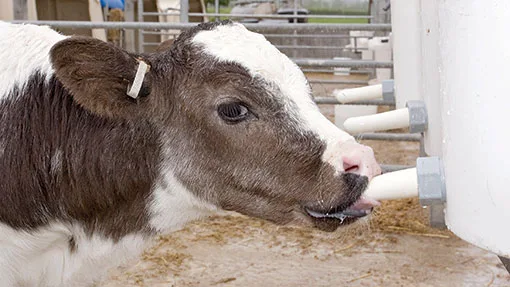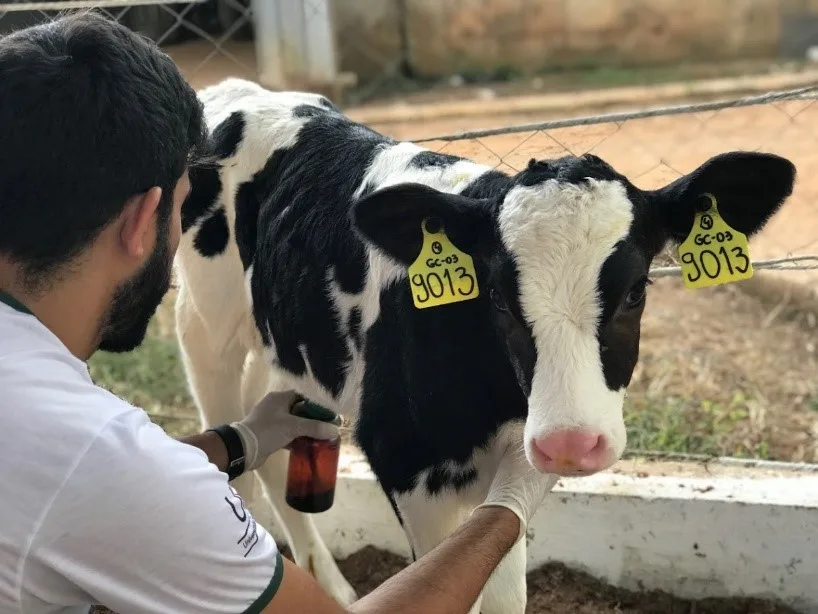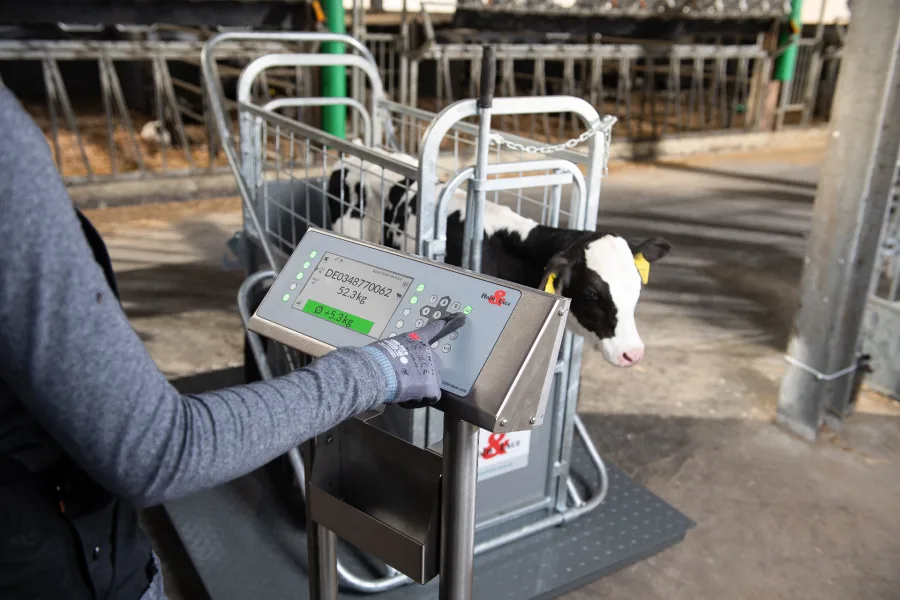Boost calf health and performance with top tools: sanitary colostrum vessels, reusable naval dippers, refractometers, scales, and ammonia monitors. Ready to up your game?
In the demanding world of dairy farming, the health and performance of your calves and heifers can’t be left to chance. Effective calf and heifer management is crucial for a successful dairy operation, ensuring that young animals grow into productive, high-yielding cows.
The Dairy Calf and Heifer Association Annual Conference, a renowned platform for the latest advancements in calf and heifer management, unveiled five key innovations this year. From sanitary colostrum vessels to ammonia monitors, these tools have the potential to revolutionize your calf management practices. Incorporating these innovations into your routine could be the game-changer your dairy operation needs.

Spotlight on Colostrum Hygiene: The First Step to Robust Calf Health
Using sanitary colostrum vessels is not just a hygiene measure, it’s a direct investment in your calves’ health. By ensuring newborn calves receive clean, uncontaminated colostrum, you’re preventing the spread of disease and boosting calf immunity. This simple step can significantly reduce the risk of illnesses in vulnerable newborns.
Maintaining high hygiene standards ensures colostrum remains rich in essential antibodies and nutrients, protecting calves’ immune systems. Clean vessels promote better health during the crucial early days of life and lay a strong foundation for growth and resilience. It’s a small investment with significant benefits for healthier, more robust calves.

Reusable Navel Dippers: A Small Tool with Big Benefits
Reusable navel dippers are essential tools in calf management. By disinfecting the navel area, these tools help reduce the risk of infections, a crucial step right after birth.
These dippers ensure that each calf gets the disinfectant, promoting faster healing and overall health. Keep them clean and sanitized for reliable infection prevention: They are a small tool that significantly impacts calf health.

Refractometers: Precision Tools for Optimal Calf Nutrition
Refractometers are not just precision tools, they’re decision-making aids. By measuring total proteins in colostrum and blood serum, they provide essential data about colostrum quality and calf nutrition. This instant feedback allows you to make timely, informed decisions that can have a profound impact on calf health and growth.
Accurate protein measurements are crucial for calf health. High-quality colostrum with ample immunoglobulins transfers necessary immunity to newborn calves, safeguarding them from early diseases. Ensuring colostrum’s protein levels meet standards helps build a robust immune system.
Checking total proteins in calf blood serum reveals overall health and nutritional status. Low levels indicate malnutrition or poor colostrum absorption, necessitating timely care. Refractometers provide precise readings, aiding in tailored feeding and care, which promotes better health and improved growth in your herd.

Heifer Growth Tracking: The Key to Breeding Success and Herd Performance
Monitoring heifer growth before breeding is crucial for their health and future productivity. Regularly using scales to track weight gives you a clear picture of how effective your feeding and care strategies are. Accurate growth metrics let you adjust nutrition and management practices, ensuring heifers reach optimal size and condition for breeding.
Tracking these metrics helps identify growth patterns and potential issues early on. If a heifer isn’t gaining weight as expected, it might indicate health or dietary problems. Addressing these promptly prevents breeding delays and improves overall herd performance. Investing in scales for weight monitoring is a practical step toward better herd management, leading to higher success rates in breeding and milking productivity.

Ammonia Monitors: Breathing Easier for Healthier Calves
Ammonia monitors can be a game-changer for your calf housing facilities. These devices measure air quality and help protect calf respiratory health. Elevated ammonia levels can increase infection risk and reduce overall well-being.
By monitoring ammonia levels, you can spot problems early and improve ventilation, ensuring your calves breathe healthier air. This approach boosts hygiene and overall calf performance.
Investing in and using ammonia monitors diligently promotes healthier calves and a more productive herd.
Non-Negotiables in Calf Management: Start with Cleanliness
When it comes to calf management, cleanliness is critical. Here’s how to give your calves the best start:
- Avoid Dirty Equipment: Always clean and sanitize bottles, feeders, and other equipment after each use.
- Use Single-Use Paper Cups: Opt for disposable paper cups for medications and supplements to prevent cross-contamination.
- Practice Rigorous Cleaning Routines: Regularly disinfect pens, feeding areas, and water troughs.
- Hand Hygiene: Wash your hands with disinfectant soap before and after handling calves.
- Colostrum Collection and Storage: Use clean containers and store colostrum appropriately to prevent bacterial contamination.
- Regular Health Checks: Conduct routine health checks to catch and address issues early.
Implementing these practices promotes disease prevention and overall calf health, producing more robust and high-performing animals.
The Bottom Line
The Dairy Calf and Heifer Association Annual Conference highlighted essential tools to boost calf and heifer management. These tools include ensuring colostrum hygiene, using reusable navel diapers, measuring protein with refractometers, tracking growth with scales, and monitoring ammonia levels. By adopting these practices, you play a crucial role in leading to healthier calves, robust growth, and improved breeding outcomes. Embrace these tools to enhance your calf management and see tangible improvements in your herd’s health and productivity, knowing that your efforts are integral to the success of your dairy operation.
Key Takeaways:
- Sanitary Colostrum Vessels: Ensure the first feeding is free from contaminants to boost immunity in newborns.
- Reusable Navel Dippers: Disinfect the navel area to prevent infections and promote healthy growth.
- Refractometers: Accurately measure total protein levels for optimal calf nutrition.
- Scales for Pre-breeding Heifer Growth Goals: Track growth to meet breeding objectives and improve herd performance.
- Ammonia Monitors: Monitor air quality to protect respiratory health in calf housing facilities.











